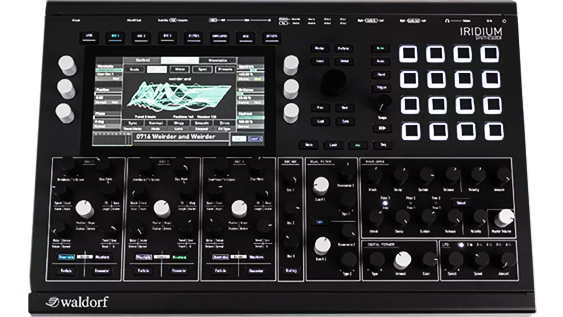
photo from synthanatomy.com
Exploring Ableton’s Granular Synth and Granular Synthesis Introduction
Introduction
In the ever-evolving landscape of music production, technology continually introduces new dimensions of sound design and composition. Among the latest breakthroughs, Ableton Live’s Granular Synth and the technique of granular synthesis have emerged as powerful tools for shaping and manipulating audio in unprecedented ways. In this article, we will delve into the realm of granular synthesis, uncovering its inner workings and demonstrating how Ableton’s Granular Synth empowers producers to create rich, textured soundscapes.
Demystifying Granular Synthesis

Understanding the Grain
At the core of granular synthesis lies the concept of a “grain” – a minuscule fragment of sound, typically lasting a few milliseconds. These grains form the building blocks of complex textures and evolving sonic landscapes. Granular synthesis involves the manipulation of these grains in various ways to craft entirely new sounds.
Parameters and Controls
Ableton’s Granular Synth provides an intuitive interface for controlling the granular synthesis process. Essential parameters include grain size, pitch, position, and density. Experimenting with these settings allows producers to stretch, pitch-shift, pan, and layer grains, offering an array of creative possibilities.
Ableton’s Granular Synth features a user-friendly interface, making it accessible to both novices and seasoned producers. The intuitive layout allows for quick navigation and easy adjustment of parameters, fostering a seamless creative process.
Real-time Manipulation
One of the standout features of Ableton’s Granular Synth is its ability to facilitate real-time manipulation of audio. This enables producers to dynamically shape soundscapes during live performances or recording sessions, adding an element of spontaneity and expressiveness to the music.
Granular Synthesis in Practice

1. Evolving Pads and Textures
Utilize granular synthesis to transform static pad sounds into evolving, dynamic textures. Experiment with grain parameters to achieve a sense of movement and progression within your compositions.
2. Vocal Processing
Apply granular synthesis to vocals for unique and otherworldly effects. Stretching and pitch-shifting grains can lead to ethereal harmonies or haunting textures, providing a distinctive sonic signature.
3. Percussive Elements
Give percussion a fresh, experimental edge. By granularizing percussive samples, you can create intricate rhythms and organic percussive textures that add depth and complexity to your tracks.
Layering and Modulation
Ableton’s Granular Synth allows for the layering of multiple samples, further expanding the sonic palette. Additionally, modulation sources can be assigned to various parameters, enabling dynamic, evolving soundscapes that evolve over time.
As technology advances, granular synthesis stands at the forefront of sonic innovation. Its ability to manipulate audio at a microscopic level opens up endless possibilities for creating immersive, experimental, and forward-thinking music.
Conclusion: Elevate Your Sound with Ableton’s Granular Synth
Ableton Live’s Granular Synth, coupled with the techniques of granular synthesis, offers a transformative approach to sound design and composition. By harnessing the power of grains, producers can craft intricate textures, dynamic rhythms, and otherworldly effects that push the boundaries of music production. Embrace the future of sound with Ableton’s Granular Synth, and unlock a universe of sonic possibilities. Your next musical masterpiece is just a grain away!
If you want to learn more about Ableton and Music Production check out: https://monBeats.art/blog
Happy producing!